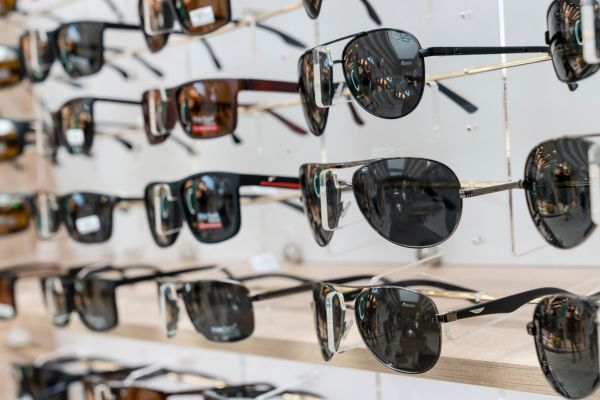When it comes to protecting your eyes from the sun, sunglasses are more than just a fashion accessory—they are a necessity. But if you’ve ever shopped for a new pair, you’ve likely come across the terms polarized and non-polarized. Understanding the difference between these two types of lenses can help you make an informed choice for your lifestyle. In this article, we dive deep into the debate of polarized vs non-polarized sunglasses, exploring their features, benefits, and which might be the better option for you.
What Are Polarized Sunglasses?
Polarized sunglasses are designed with a special chemical coating that filters light. This coating blocks intense reflected light, also known as glare, which commonly occurs on flat surfaces such as water, roads, and snow. By reducing glare, polarized lenses enhance visual clarity and comfort, making them a popular choice for outdoor enthusiasts, drivers, and athletes.
The science behind polarized lenses lies in their ability to filter horizontal light waves. While sunlight scatters in all directions, when it reflects off surfaces, it tends to travel in a horizontal direction, causing intense glare. Polarized lenses neutralize this effect by allowing only vertical light to pass through, resulting in sharper vision and reduced eye strain.
Understanding Non-Polarized Sunglasses
Non-polarized sunglasses, on the other hand, offer basic protection against bright sunlight without the specialized glare-blocking filter. They reduce the overall brightness and shield your eyes from harmful ultraviolet (UV) rays, but they do not specifically target glare. These sunglasses are ideal for casual daily use where intense reflections aren’t a frequent concern.
While non-polarized lenses may not have the advanced filtering capabilities of their polarized counterparts, they still play an important role in safeguarding your eyes from UV damage and improving visibility in sunny conditions.
Comparing Visual Clarity and Comfort
When considering polarized vs non-polarized sunglasses, one of the most significant differences lies in visual clarity. Polarized sunglasses provide superior clarity, especially in high-glare environments. For instance, fishermen rely on them to see beneath the water’s surface, and drivers find them invaluable for cutting the blinding glare off wet roads.
Non-polarized sunglasses may not offer this level of precision, but they still provide relief from harsh sunlight. For indoor or shaded environments where glare is less prevalent, non-polarized lenses can be just as comfortable and often come at a more affordable price point.
Situations Where Polarized Sunglasses Excel
The advantages of polarized sunglasses are most evident in specific scenarios. Outdoor sports such as skiing, boating, or cycling involve environments where glare can hinder performance and safety. Polarized lenses improve depth perception and contrast, making it easier to navigate terrain or water surfaces.
Driving also becomes safer with polarized sunglasses. They reduce reflections from car hoods, windshields, and wet roads, allowing for a clearer and more comfortable driving experience, especially during bright sunny days or after rain.
When Non-Polarized Sunglasses Are the Better Choice
Although polarized sunglasses offer impressive benefits, there are situations where non-polarized lenses might be preferable. For example, pilots often avoid polarized sunglasses because they can interfere with reading digital screens and instruments. Similarly, using polarized lenses with certain LCD screens or devices can create a rainbow effect or obscure visibility.
Non-polarized sunglasses are also ideal for indoor use or in environments where glare isn’t a primary concern. They provide reliable sun protection without the potential drawbacks of polarization in specific technical settings.
The Role of UV Protection
It’s crucial to remember that both polarized and non-polarized sunglasses can offer full UV protection. The polarization feature itself does not determine the level of UV defense. Always check the label to ensure that your sunglasses block 100% of UVA and UVB rays, regardless of which type you choose.
Making the Right Choice for Your Lifestyle
The decision between polarized vs non-polarized sunglasses ultimately depends on your lifestyle and needs. If you spend considerable time outdoors, near water, or on reflective surfaces, polarized sunglasses can dramatically enhance your visual experience and eye comfort. They are particularly beneficial for sports enthusiasts, drivers, and anyone sensitive to glare.
On the other hand, if your activities don’t involve significant glare or if you frequently work with screens or instruments, non-polarized sunglasses may be a practical and cost-effective solution.
The Bottom Line
Choosing between polarized and non-polarized sunglasses doesn’t have to be complicated. Both options provide essential sun protection, but polarized lenses offer an extra layer of visual comfort by reducing glare. Understanding how and where you will use your sunglasses can help you make a choice that complements your lifestyle.
Whether you opt for the advanced glare-reducing technology of polarized sunglasses or the simplicity of non-polarized lenses, prioritizing UV protection should always be your first consideration. In the end, the best pair of sunglasses is the one that keeps your eyes safe while fitting seamlessly into your daily activities.
